In January 2020 we declared a climate emergency, called on the rest of the industry to do the same, and set out our action plan for 2020.
Top of the list? ‘Publish a transparent, 3rd party verified, carbon footprint analysis for each of our trips, as well as our internal operations.’
Despite everything 2020 threw at us, we were determined to not let our commitments slip, and we’re delighted to say our carbon label has gone live.
It’s inspiring to see companies in other industries, such as Patagonia and Oatly for example, measuring and sharing their impact and it’s clear that the travel industry has been behind the curve on this front.
We believe that must change, quickly.
Measuring AND transparently publishing your carbon impact must become the norm for every organisation, in every sector of travel, and every other industry for that matter.
So, on every one of our trips you’ll now see this ‘carbon footprint’ section where you can view the estimated carbon emissions per person arising from your spot on the trip.

How did you do it?
We teamed up with an independent carbon consultancy to do the initial calculations and have since had them peer reviewed by partners and experts across the industry, including a number of members of Tourism Declares a Climate Emergency.

The figure shown includes an estimate of all local transport, accommodation, activities, guides, staff and office operations, and unlike most other measurement attempts we’re aware of, all food.
The only thing it doesn’t include is flights and travel to the destination, which is of course, a major factor we can’t ignore. However, as we don’t book flights, have customers from all corners of the world, and no way of reliably knowing their travel plans, we simply can’t include them in the figure on display for now. We’ve got a goal for 2021 to fix that, so that when you book, there is a way to measure and mitigate the carbon emitted by your flight too.
Instead we calculated the carbon impact of flight emissions for a sample of over 4500 customers in 2019.
We’re openly sharing the method we used. Our hope is that by releasing both our measurements and the methodology we used, other companies will be able to more easily follow suit, build and improve on what we’ve done so far, and give feedback that can help us improve further. See the full method here.

What did you find?
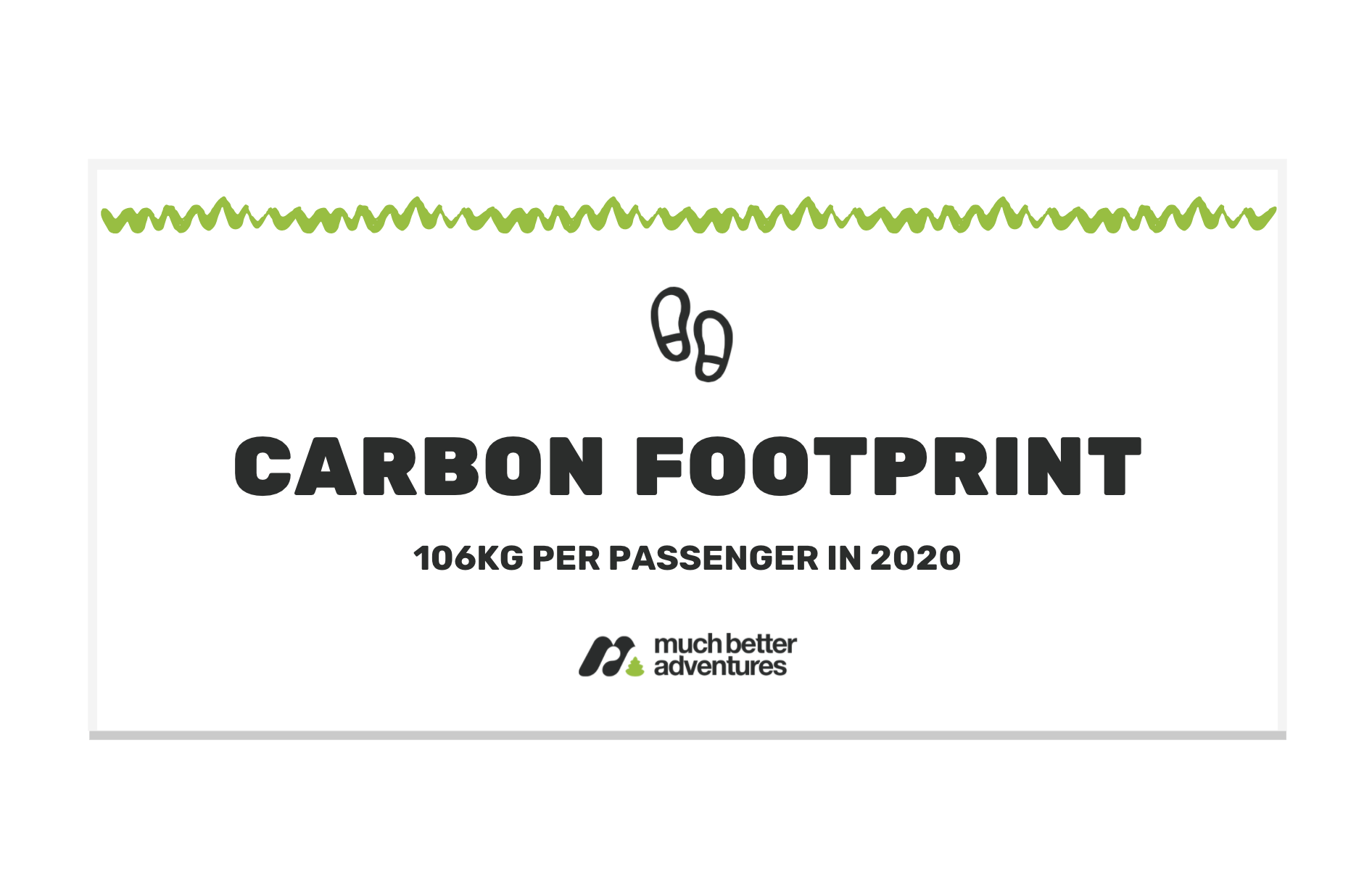
The average carbon footprint across all our trips worked out to be 112 kg CO2 per person in 2019 and 106 kg CO2 per person in 2020 (for those trips that did actually happen - cheers Covid).
To put that into context, driving 1000 miles/1,609km would emit approximately 281kg of CO2 in an average petrol car (or 140.5kg per person if there were 2 of you in it). A return economy class flight from London to New York would be approximately 1,619kg per person.
While the figure varies widely depending on the trip, as an average across them all it broke down to be:
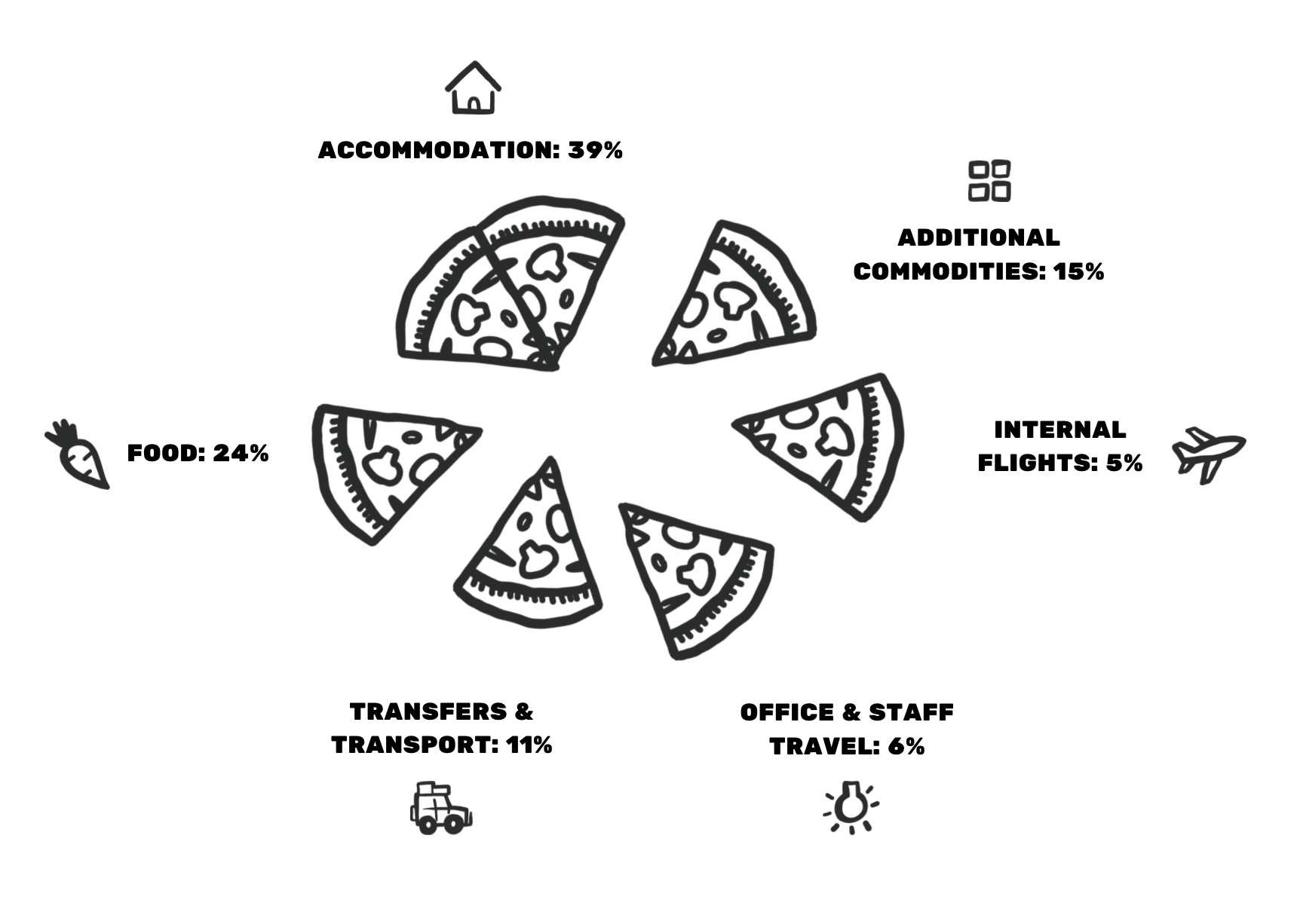
As for flights to the destination, existing academic research suggests flights account for between 40% and 12% of the global carbon footprint of tourism.
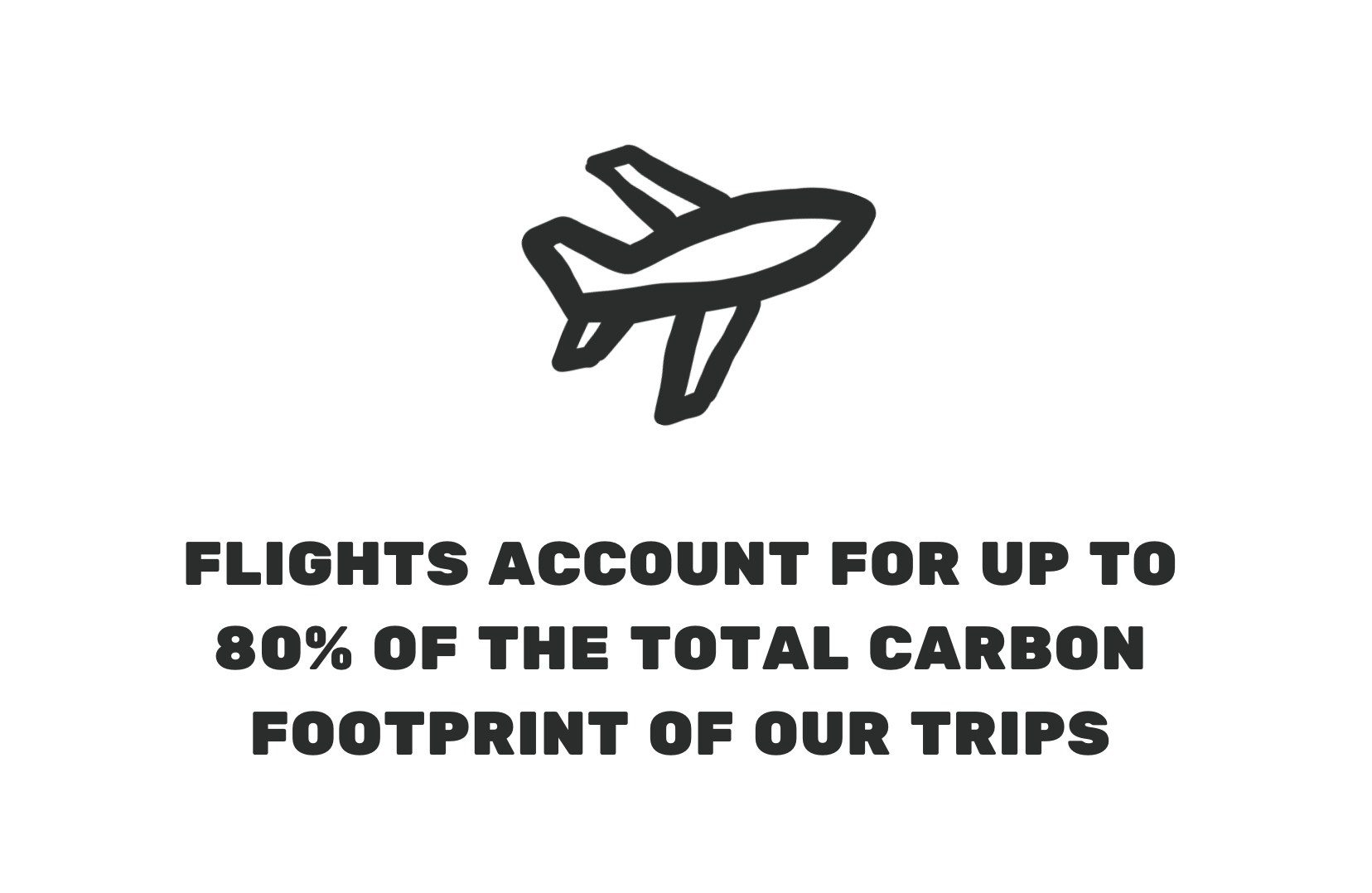
We were amazed to find therefore that based on our sample of over 4000 travellers, the flights accounted for up to 80% of the total carbon footprint of the trips.
So amazed, that we had to do a recount to confirm the results were correct.
We knew the adventures we do are by design relatively low carbon - we camp and kayak, hike and stay in mountain huts, but hadn’t expected the results to be quite so stark. Compare them to luxury resorts with all-you-can-eat buffets, cruise ships and coach or minibus based overland tours however, and you quickly realise why we scored so low compared to the industry average.
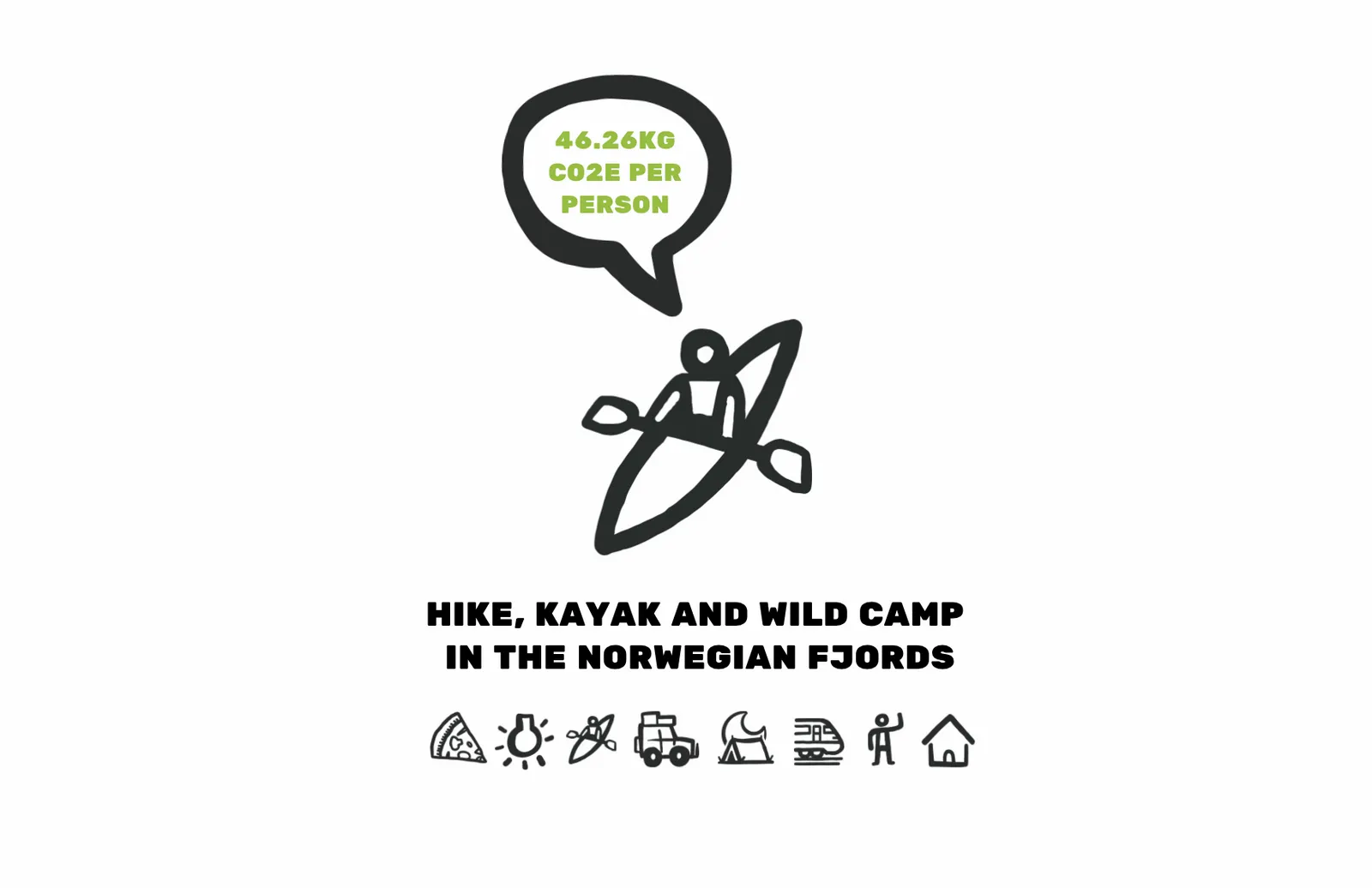
That’s great, but what are you doing with this information?
Firstly, now we have this breakdown for each trip, it gives us the framework from which we can work with local hosts to identify ways we can go even further in reducing carbon across the trips. From food sourcing to accommodation and transport choices, there is definitely still room for improvement, and that becomes our goal for 2021 and beyond.
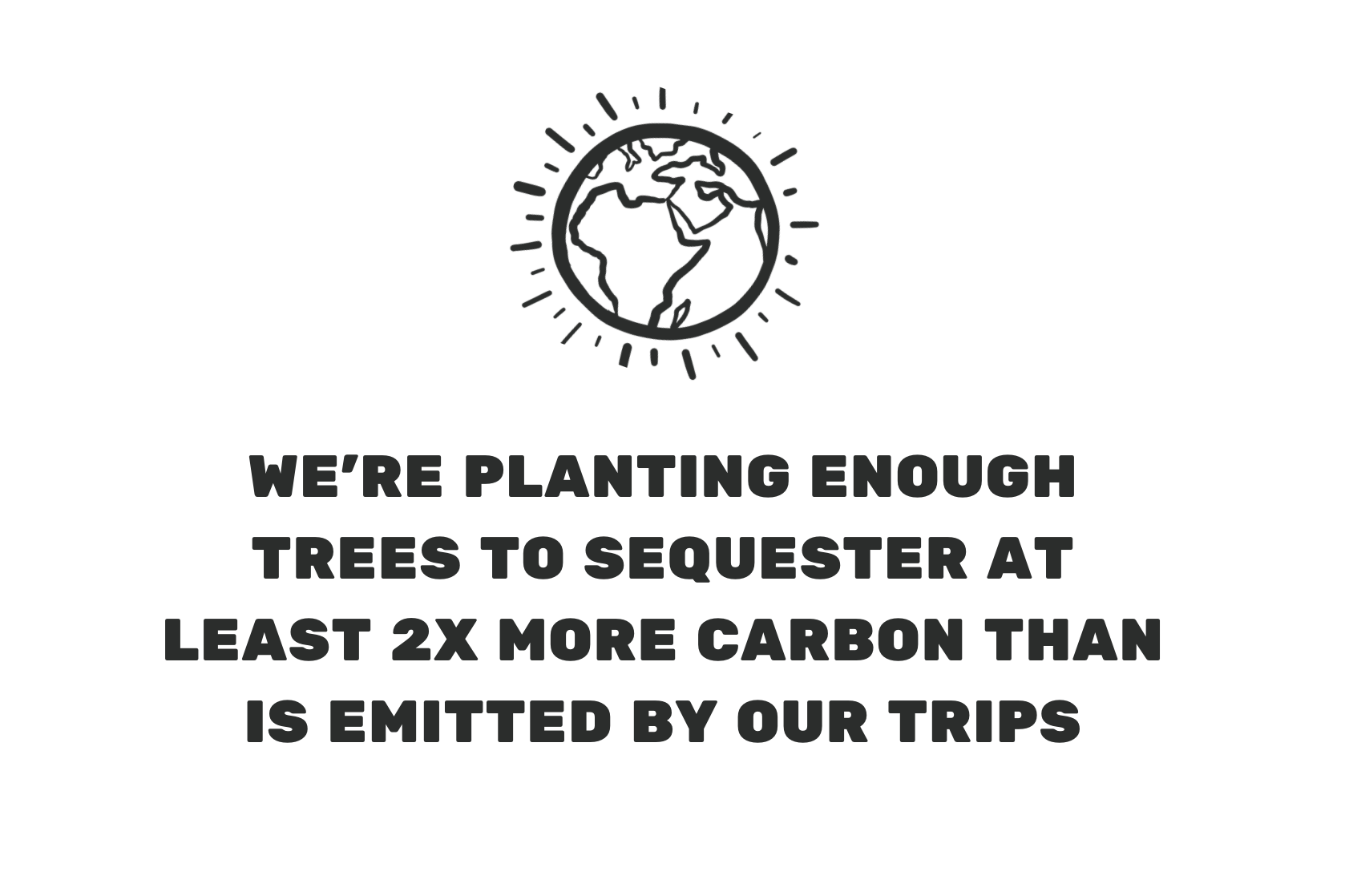
Secondly, for every traveller on every trip booked with us since 2016 we’re planting enough trees to sequester at least 2x more carbon than is emitted by the trip. All native trees, as part of amazing projects that are re-foresting degraded land, tackling the biodiversity crisis and supporting local communities at the same time. We go further than that too, also funding re-wilding projects worldwide to help protect important keystone species from extinction. See all the projects we support.

Shouldn’t you just stop encouraging people to fly?
This is a question we wrestle with all the time. How can you be a sustainable travel company when travel so often involves flying? As this research has shown us, despite the trips themselves being relatively low carbon compared to the norm, the travel to the destination is a huge part of the carbon footprint of our trips.
We very much encourage all customers to minimise the number of flights they take. We’re continuing to expand the range of adventures you can do near home, and that are accessible by train, and developing an ever wider range of big adventures designed to allow you to fly less, and stay for longer.
However, to simply stop offering any trips that involved flying would, we believe, do more harm than good. Tourism employs 10% of the global population and is an incredibly important global re-distributor of wealth from developed to developing countries. Without the income from tourism, not only would the human cost be devastating, but the environmental cost unimaginable.
Tourism is and can be a major driving force behind the conservation and protection of natural wonders, without which far more destructive economic alternatives such as mining and deforestation would become the only options in many places.
In summary, we truly believe that tourism can be part of the solution to the global climate and biodiversity crisis, and a solution without tourism is simply not the right solution.

So... what now?
Well, we've done the first bit of our homework and laid out our Carbon Action Plans for 2021. You may as well go and read them seeing as you're in this deep already.
You can also read our report on how we got on with all our 2020 Carbon Action Plans.
We also plan to release our first Annual Sustainability report and work with our local hosts to complete an in-depth supply chain assessment. This will help us to better monitor and report on our impacts, good and bad, and create a roadmap for further improvements and carbon reduction.
I work for a travel company, can you help us work out and display our carbon footprint too?
Absolutely. You can't manage what you can't measure, so we're encouraging everyone in our lovely industry to share their carbon footprint. We hope that this transparency will allow customers to make informed decisions about their own travel plans in future.
We also hope that by releasing both our measurements and the methodology we used, it would encourage other companies to more easily follow suit, and improve on it.
So here's our entire methodology for free, for you to do the same and build on what we've done so far.



